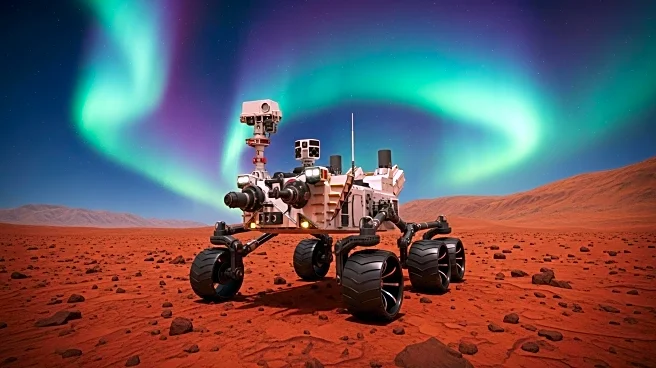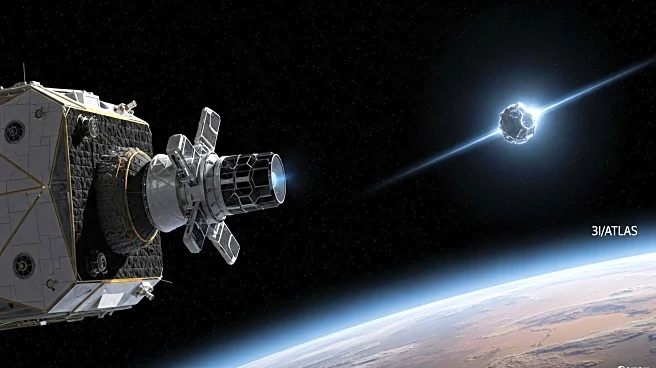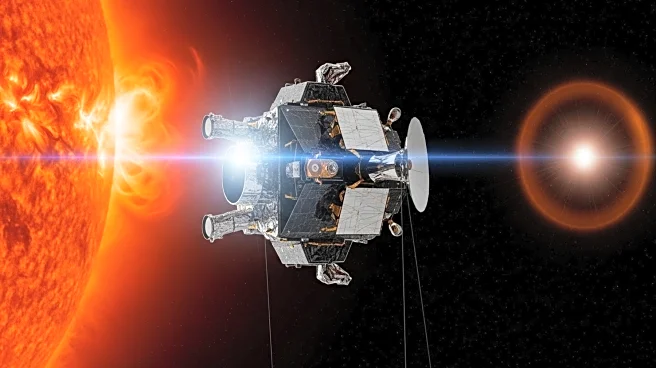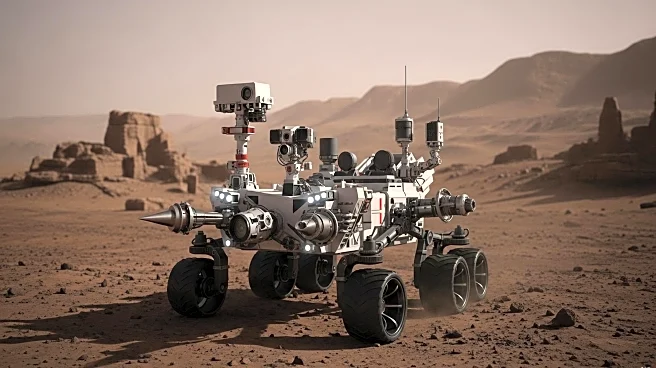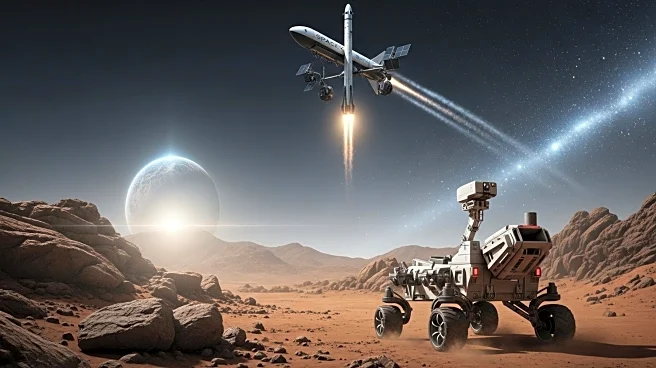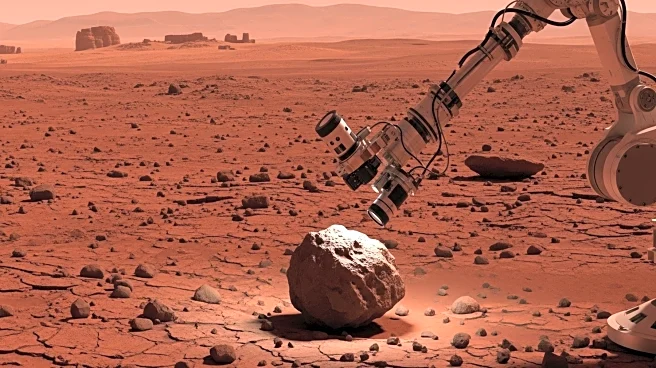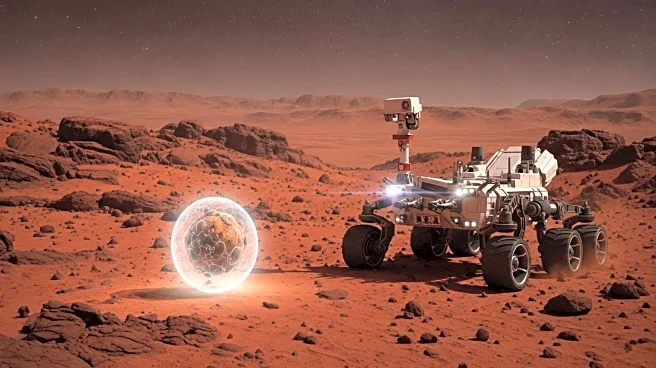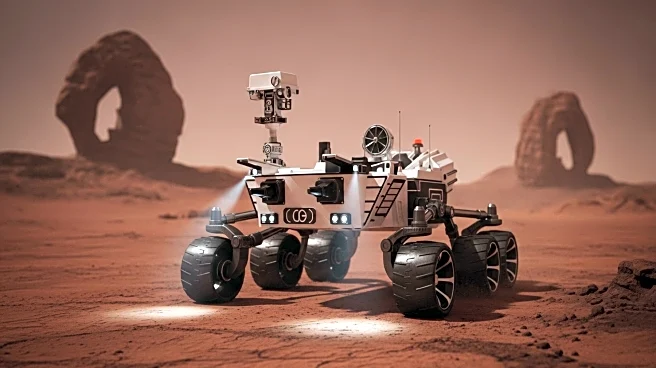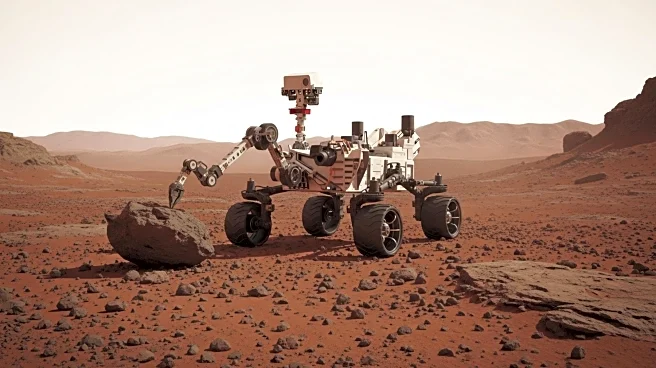What's Happening?
NASA's Perseverance rover has successfully captured visible green auroras on Mars for the second time, marking a significant advancement in predicting these phenomena. The rover first recorded a visible-light aurora from the Martian surface in 2024. At the Europlanet Science Congress–Division of Planetary Science joint meeting in Helsinki, Dr. Elise Wright Knutsen from the University of Oslo presented a new image and a method for forecasting aurorae on Mars. These aurorae occur when energetic particles from the solar wind, released during a coronal mass ejection (CME), collide with atmospheric molecules, causing them to emit light. Unlike Earth, Mars lacks a global magnetic field, allowing aurorae to spread across the entire nightside as a diffuse glow. Predicting these aurorae involves planning observations and uploading them to the rover three days in advance, based on CME activity.
Why It's Important?
The ability to predict Martian aurorae is crucial for future human missions to Mars, as the same radiation causing aurorae could pose a danger to astronauts. Understanding when solar storms will hit Mars can help ensure astronaut safety by providing timely warnings to take shelter. The research also contributes to the scientific understanding of aurorae, as Mars lacks a global magnetic field, making the prediction of aurorae more complex compared to Earth. The findings from Perseverance, along with data from NASA's MAVEN and ESA's Mars Express missions, are building a comprehensive dataset that could improve the accuracy of aurora predictions and solve ongoing mysteries about their occurrence on Mars.
What's Next?
Further observations and research are expected to enhance the understanding of Martian aurorae. Scientists aim to compare the timing of solar wind disturbances, the arrival of solar energetic particles, and the intensity and timing of aurorae to advance knowledge in this area. Continued efforts will focus on targeting faster, more intense CMEs to increase the likelihood of aurora detection. This research is supported by the Research Council of Norway and NASA's Mars 2020 Program, indicating ongoing investment in understanding Mars's atmospheric phenomena.
Beyond the Headlines
The study of Martian aurorae not only aids in preparing for human exploration but also enriches the scientific community's understanding of planetary atmospheres and solar interactions. The lack of a global magnetic field on Mars presents unique challenges and opportunities for studying aurorae, potentially offering insights into atmospheric processes that differ from those on Earth. This research could lead to broader implications for understanding space weather and its effects on planetary environments.
